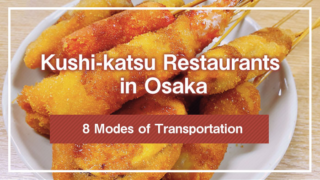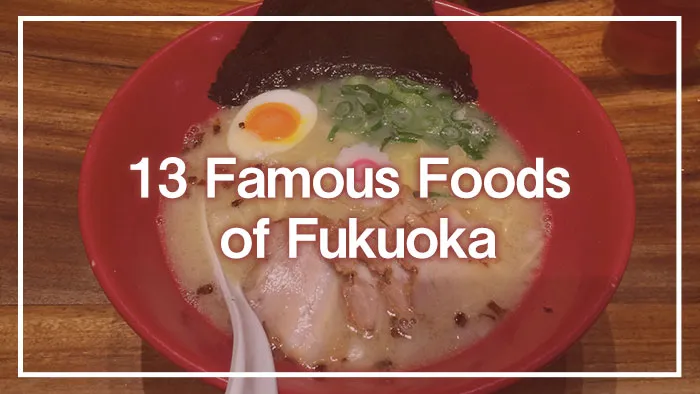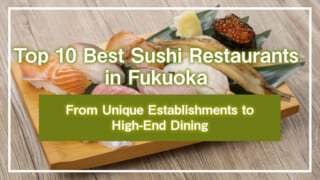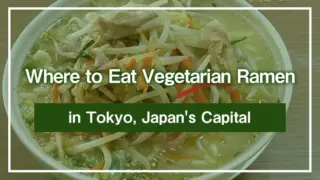Fukuoka offers many attractive culinary options, from nationally famous gourmet dishes to locally beloved soul food. For example, mizutaki is a representative hot pot dish of Fukuoka where chicken and vegetables are simmered together. The soup, which concentrates the umami of the ingredients, is characterized by its mellow, deep flavor. Gobo-ten udon and steamed eel in a bamboo steamer are also famous Fukuoka dishes.
In this article, we’ve carefully selected 13 famous foods that we particularly recommend to international tourists visiting Fukuoka, and will introduce the appeal, taste, and places to enjoy each dish.
1. 5 Must-Eat Famous Foods of Fukuoka
Fukuoka is home to many exquisite dishes, including Hakata Ramen with its rich pork bone soup, Mizutaki with its flavorful chicken and vegetable broth, and Chicken Skin Skewers that pair perfectly with beer. Here, we introduce five carefully selected options.
1-1. Hakata Ramen
Hakata Ramen features a pork bone soup and thin noodles. The pork bone soup is a rich, milky white broth made by simmering pork bones for a long time. The soup varies in richness and flavor from shop to shop, offering a variety of taste experiences. The noodles are typically very thin straight noodles that cling well to the soup. Many shops allow you to choose the firmness of the noodles, so you can customize to your preference.
There’s also a culture of ordering extra noodles called “kaedama” after finishing your first serving. This is one of the unique ways to enjoy Hakata Ramen.
1-2. Motsunabe
Motsunabe is a hot pot dish where fresh beef offal is simmered with vegetables. The history of Motsunabe is relatively recent, spreading during the post-war food shortage era as an affordable, nutritious food. There are many Motsunabe specialty restaurants in Fukuoka City.
Fresh offal has a melt-in-your-mouth texture and rich umami flavor. When simmered with vegetables like cabbage and nira (garlic chives), the flavors of each ingredient meld together. The soup base varies from shop to shop, including soy sauce-based and miso-based versions, allowing you to enjoy each restaurant’s unique flavor.
1-3. Mizutaki
Mizutaki is a simple hot pot dish where chicken and vegetables are simmered together. The characteristic of Mizutaki is the milky white soup made by simmering chicken bones for a long time. The rich soup has a thickness that enhances the umami of the chicken and vegetables. Common ingredients include bone-in chicken, chicken meatballs, Chinese cabbage, green onions, and tofu.
To eat Mizutaki, first taste the soup, then dip the chicken and vegetables in ponzu sauce. Adding yuzu kosho (citrus pepper paste) as a condiment gives it a different flavor. To finish, it’s common to add rice or noodles to the soup to make a porridge or ramen-style dish.
1-4. Chicken Skin Skewers & Yakitori
Chicken skin skewers are made by wrapping chicken skin around skewers and grilling them, offering a unique texture that’s crispy on the outside and juicy on the inside.Particularly in Hakata, chicken skin skewers are grilled and rested repeatedly, removing excess fat to concentrate a distinctive savory aroma and umami not found elsewhere.
Yakitori consists of chicken, pork, or vegetables skewered and grilled, offering a variety of different parts and ingredients to enjoy. Fukuoka’s yakitori is characterized by the frequent use of pork, including pork belly and darumus (pork intestine).
1-5. Mentaiko
Fukuoka’s specialty “mentaiko” is pollock roe seasoned with chili pepper and other ingredients.
The history of mentaiko is said to have roots in salted pollock roe from the Korean Peninsula, which was modified to suit Japanese tastes and spread as the current mentaiko. In Fukuoka especially, each manufacturer creates distinctive mentaiko using unique production methods and seasoning liquids.
Mentaiko can be enjoyed not only as a side dish with rice but also in various dishes like pasta, bread, and omelets. It’s also a popular souvenir, being one of the specialty products that tourists visiting Fukuoka eagerly purchase.
2. More Famous Foods of Fukuoka
Within Fukuoka Prefecture, there are many dishes with regional characteristics, such as Kurume Ramen and Yanagawa’s steamed eel in bamboo steamer. Below, we introduce eight Fukuoka foods that we would like international tourists to try if they have the chance.
2-1. Kurume Ramen
Kurume Ramen is a pork bone ramen originating from Kurume City in Fukuoka Prefecture, characterized by a richer and stronger pork bone flavor than Hakata Ramen. Kurume is also known as the birthplace of pork bone ramen.
The soup is concentrated with the umami of pork bones simmered for a long time, making it very rich. Depending on the shop, you might even notice a distinctive pork bone aroma. The noodles are slightly thicker than those in Hakata Ramen.
To enjoy the authentic taste, visiting Kurume City is best, but there are shops in Fukuoka City that serve Kurume Ramen as well.
2-2. Iron Pot Gyoza
Iron pot gyoza are bite-sized dumplings cooked in a hot iron pot and characteristically served beautifully arranged in a disc shape. They have a crispy bottom and chewy skin texture. The filling contains pork and vegetables. There are many restaurants specializing in iron pot gyoza particularly in the Nakasu and Tenjin areas.
2-3. Gobo-ten Udon
Gobo-ten udon is Fukuoka’s local udon dish featuring soft, gentle textured noodles, flavorful broth, and tempura made from thinly sliced burdock root. One way to enjoy it is to first appreciate the crispy freshly-fried texture, then let it soak in the broth for a softer texture.
2-4. Steamed Eel in Bamboo Steamer
Steamed eel in bamboo steamer is a dish where eel grilled with a sweet and savory sauce is placed on top of rice that has absorbed the sauce, then steamed in a bamboo steamer.
Yanagawa City in Fukuoka Prefecture is known for this steamed eel dish. Eel dishes are a specialty in Yanagawa, and steamed eel is enjoyed as a local unique cooking method that enhances flavor and texture.
2-5. Goma Saba
Goma Saba is a local Fukuoka dish where fresh mackerel sashimi is dressed with a sweet and savory soy sauce-based dressing and plenty of sesame.
Fresh mackerel (true mackerel or spotted mackerel) caught in the Genkai Sea is used for Goma Saba. It can be enjoyed raw because of its freshness. Fukuoka has long been a region abundant in fresh seafood, and this unique cooking method using sesame and soy sauce developed as a way to enjoy easily spoiled mackerel while it’s fresh. This taste, loved by locals and familiar as home cooking, has now become a representative local dish of Fukuoka.
Goma Saba can be enjoyed on its own, placed on rice as a bowl dish, or as ochazuke (with tea poured over it), among other ways.
2-6. Amaou Strawberries
Amaou is a strawberry variety that Fukuoka Prefecture prides itself on, representing Japan. The name Amaou comes from the first letters of the Japanese words for “red, round, big, delicious,” and true to its name, these strawberries are top-class in both appearance and taste.
Amaou strawberries have an exquisite balance of sweetness and acidity, with a moderate acidity felt within their rich sweetness. When you bite into one, you can taste the juicy fruit and rich flavor. Amaou strawberries are also characterized by their large size and beautiful red color compared to typical strawberries.
2-7. Hakata Torimon
Hakata Torimon is a representative confectionery of Fukuoka and a very popular souvenir sweet.
It features a unique taste that combines elements of both Japanese and Western confectionery, with white bean paste mixed with butter, fresh cream, and condensed milk. When you put it in your mouth, you can feel the smooth, moist texture and elegant sweetness. The refined sweetness and melt-in-your-mouth texture are loved by people of all ages, from children to the elderly. It pairs well not only with Japanese tea but also with coffee or black tea.
2-8. Umegae Mochi
Umegae Mochi is a traditional grilled rice cake confectionery that has been enjoyed since the early Edo period (17th century) along the approach to Dazaifu Tenmangu Shrine in Fukuoka Prefecture.
It has plenty of sweet bean paste inside thin mochi skin, with the surface grilled to a fragrant finish. The dough, which blends glutinous and non-glutinous rice, has a chewy texture that perfectly matches the gentle sweetness of the bean paste.
The origin of Umegae Mochi is based on the legend that during the Heian period, when Sugawara no Michizane was exiled to Dazaifu, an old woman offered him mochi.
Conclusion
Fukuoka’s food culture has been nurtured by fresh local ingredients, including seafood from the Genkai Sea and agricultural products grown in fertile land. An essential part of discussing Fukuoka’s food culture is the presence of yatai (food stalls). Yatai serve not only as places to provide meals but also as social venues where locals and tourists can interact casually.
Within Fukuoka Prefecture, there are dishes with regional characteristics, such as Kurume Ramen and Yanagawa’s steamed eel in bamboo steamer. When you visit Fukuoka, please try the gourmet foods introduced in this article.
*This article is based on information available as of April 2025.
























